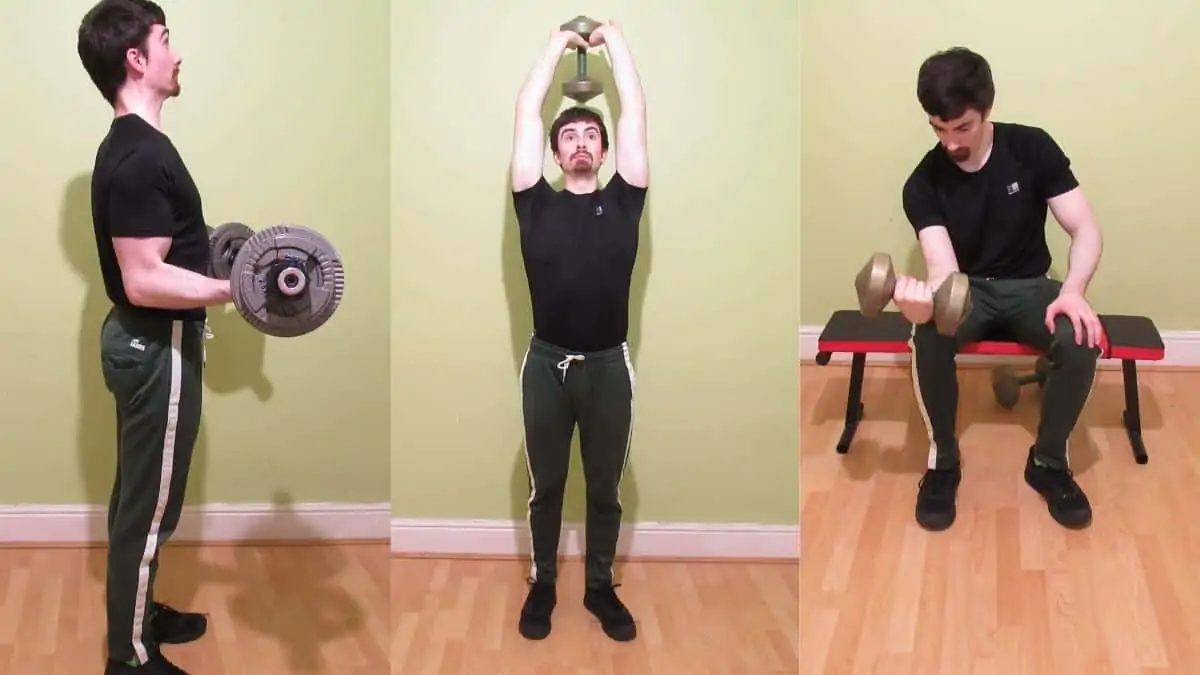Combining proven bicep and tricep movements with a selection of the best forearm exercises is a top-notch strategy for making that flexor muscle hang right off your forearm bones like a juicy chicken drumstick.
Just don’t make any of these 5 fatal biceps and forearm mistakes…
Related Posts
Bicep tricep and forearm workout mistakes
Not utilizing supersets
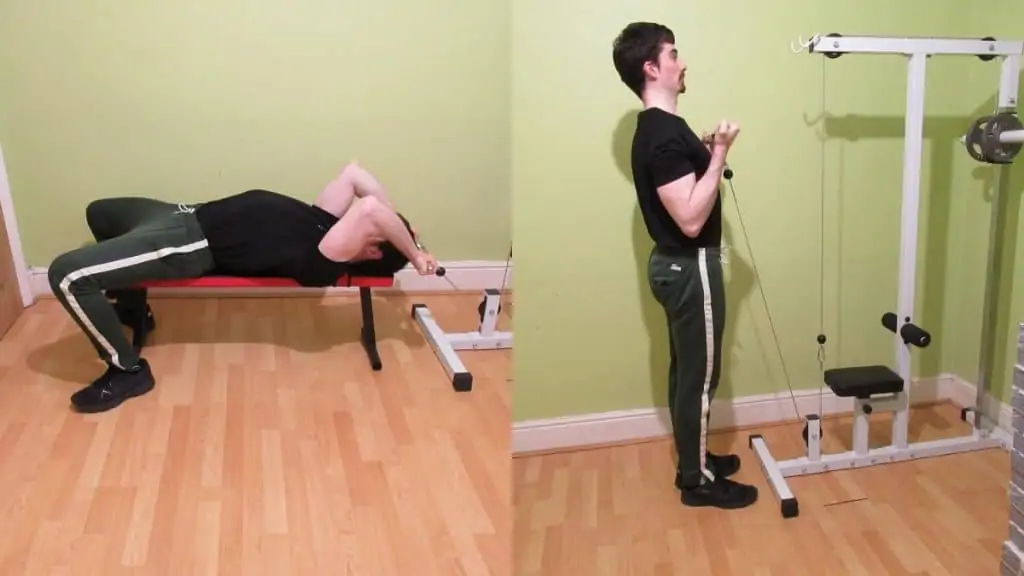
Listen. I know that you want to give your precious upper arms every ounce of your attention, but why not use supersets?
Or, more correctly, antagonistic paired sets?
Performing bicep and tricep drills back to back can only help your gains. It’ll shuttle extra blood into the muscles and recruit more motor units, so your arms will have practically no choice but to get bigger.
And even though your biceps are naturally active during tricep exercises (and vice versa), this muscle activity won’t decrease your strength on the subsequent bicep set. Why?
Because they’re not under any direct tension. In other words, during tricep extensions, for example, your triceps get stretched under load in order to allow your biceps to contract without resisting the weight.
That’s how antagonistic muscles work. One contracts while the other relaxes. They can never fully contract at the same time.
See Also: Bicep growth workout
Performing tri-sets
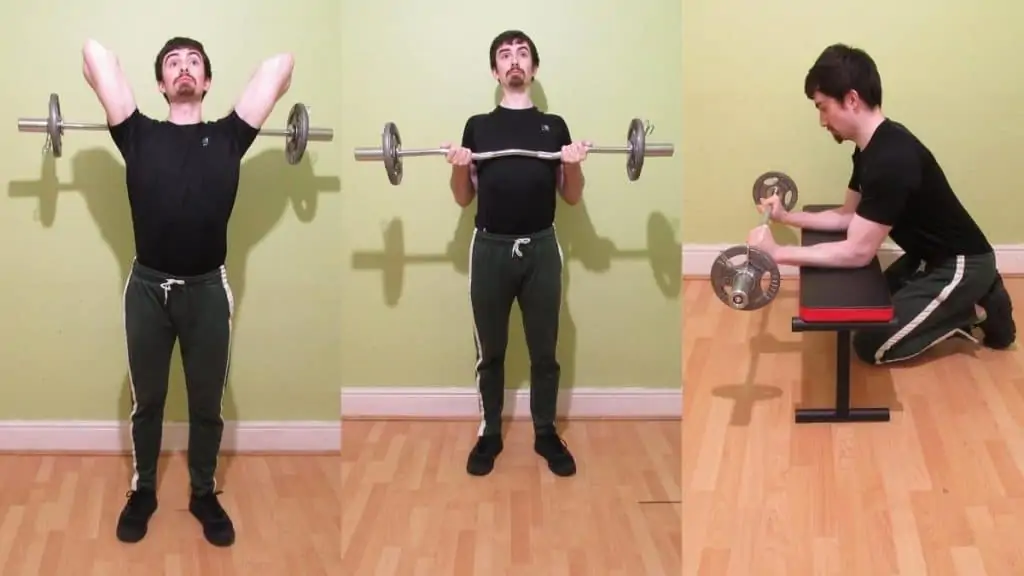
Why dis tri-sets if I’m such a big fan of paired sets?
Well, usually, I wouldn’t. But you have to understand that paired sets, tri-set, quad-sets, and the like, only work when the exercises don’t interfere with each other.
And when you train your forearms straight after curls, you’re just asking for sub-par gains because you’ll never be able to give your forearms that heavy mechanical tension that they need to grow when they’re already fatigued from curls.
So, please, by all means, do upper arm supersets. But leave the forearm work until after, ok?
Following a generic routine

This one’s a bit ironic considering that I’m about to share 3 of my (lovingly-crafted) generic arm routines. But that doesn’t mean that templated programs are ipso facto bad. After all, these routines have to be somewhat generic because I have no idea who you are.
That said, each routine is geared towards achieving maximum muscle growth as an intermediate lifter because I reckon that’s where most people are at in their lifting journeys.
Anyway, what I’m getting at here is that you need to assess your own weak points. Just because the guy in the changing room won’t shut up about his lagging biceps doesn’t mean that you also have weak biceps.
Instead, look at your physique in the mirror—objectively. It’ll tell you everything that you need to know if you’re honest with yourself.
See also
Forgetting about the forearm extensors
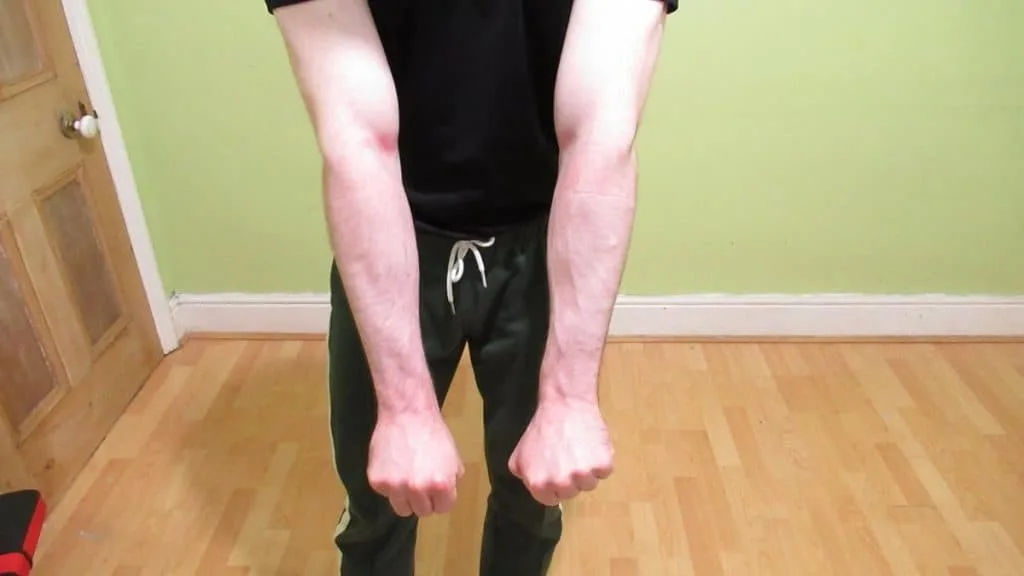
While it’s true that the flexors make up the meat of your forearms, you can’t neglect the extensors if you want to sculpt attention–demanding lower arms.
There’s so much detail in this group of small muscles that they can literally transform your arms from certain angles if they were lagging before.
For best results, though, be sure to train them with very high reps. The extensors (and the wrist joint, might I add) do NOT respond well to low reps because sets of 5-12 just don’t provide enough time under tension. So shoot for a minimum of 15 reps, and don’t be afraid to go 30 reps and beyond.
Chasing the pump
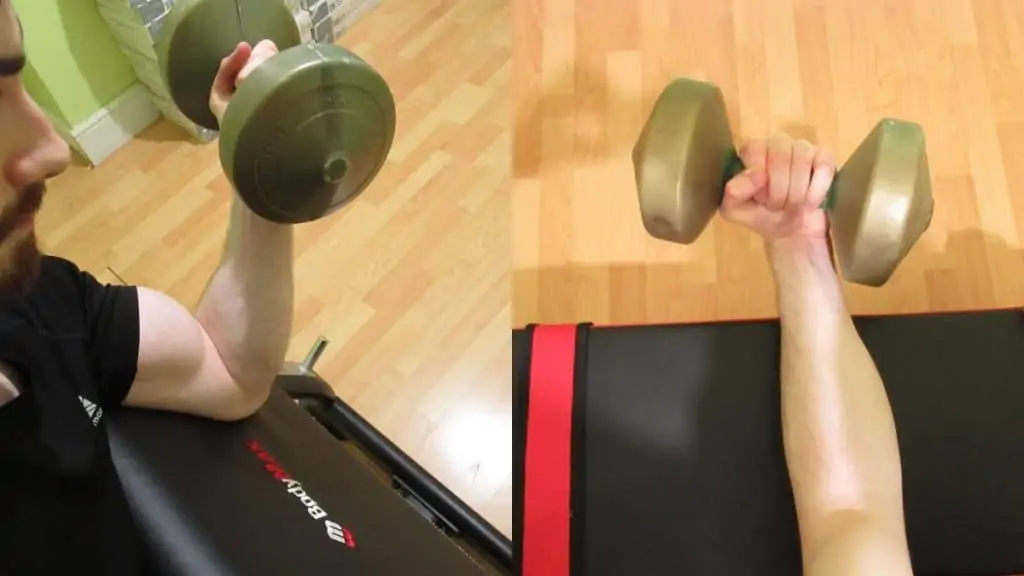
I love getting a sick arm pump as much as the next fella, but I don’t kid myself into thinking that my temporary pump will turn into permanent arm inflation.
This isn’t to say that you shouldn’t train with high reps in your bicep tricep forearm workout. But it is to stress the importance of doing exercises in moderate rep ranges (6-10) while also lifting close to failure.
This way, you give the muscles the fiber–tearing tension that they need to get bigger while also satisfying the slow-twitch fibers later on in your workout with a finishing exercise.
Bicep tricep and forearm workout routines
I said before that you need to identify YOUR weak points.
Not mine, not Big Dave’s—yours.
And while you might want to smash out endless sets of curls, that’s not a good idea if you have comparatively weaker triceps, for example.
Either way, as long as you’re honest about what you see in the mirror, I’ve got you covered.
Similar workouts
Workout 1: triceps focus
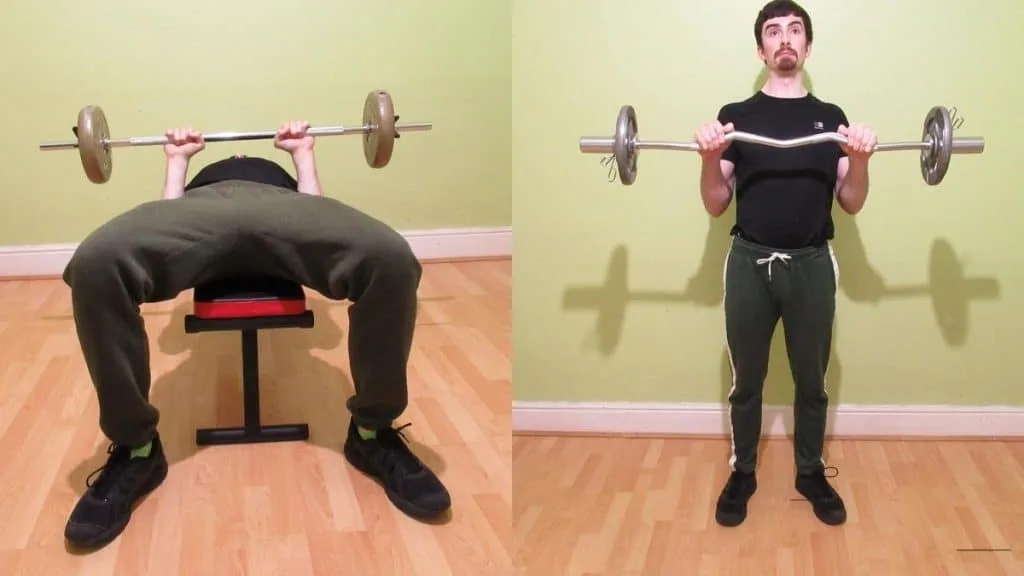
This workout will give you horseshoe triceps if you perform it consistently and nail your nutrition and recovery. We start off with 2 proven mass builders before targetting common weak points with EZ extensions (triceps long head) and EZ reverse curls (brachioradialis).
Notice how I recommend using the EZ bar for most of the movements. Well, you can also use an Olympic bar (if you have iron joints), but I find an easy curl bar way more comfortable when I’m doing high volume arm workouts.
1A: Close grip bench press: 4 x 5-7 reps
1B: EZ bar curls: 4 x 6-8 reps
2A: EZ tricep extensions: 3 x 8-10 reps
2B: EZ reverse curls: 3 x 12-15 reps
3A: Cable overhead tricep extension: 3 x 10-12 reps
3B: Standing cable curl: 3 x 8-12 reps
4: Tricep pushdowns: 2 x 20 reps
5A: Barbell wrist curls: 3 x 15-20 reps
5B: Reverse EZ curl bar wrist curls: 3 x 20-30 reps
Workout 2: biceps focus
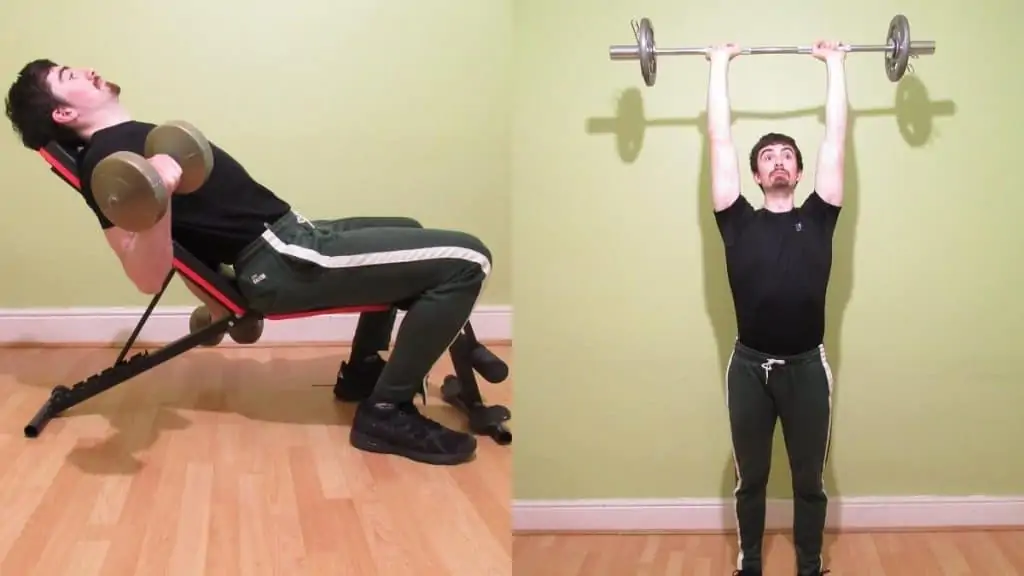
Gain instant credibility among your peers by following this bicep-building routine. The exercises are simple, but we leave no part of the arms untouched. The incline curls tear down the main bicep fibers, and the preacher curls engorge the muscle belly with blood.
If you can still grip the bar after the bicep drills, there’s also a nice forearm paired set (remember, they get a ton of work during bicep training).
Also, check out these cable forearm exercises if you want something a little different for your next session. And by different, I’m talking about constant tension for your muscles.
1A: Incline dumbbell curl: 4 x 8-10 reps
1B: Skull crushers: 4 x 8-10 reps
2A: EZ preacher curls: 4 x 10-12 reps
2B: EZ overhead extensions: 4 x 10-12 reps
3A: Reverse curls: 3 x 12-15 reps
3B: Tricep pressdowns: 3 x 12-15 reps
4: Cable curls: 2 x 20 reps
5A: Wrist curl: 3 x 12-15 reps
5B: Reverse wrist curl: 3 x 20-30 reps
Workout 3: forearms focus
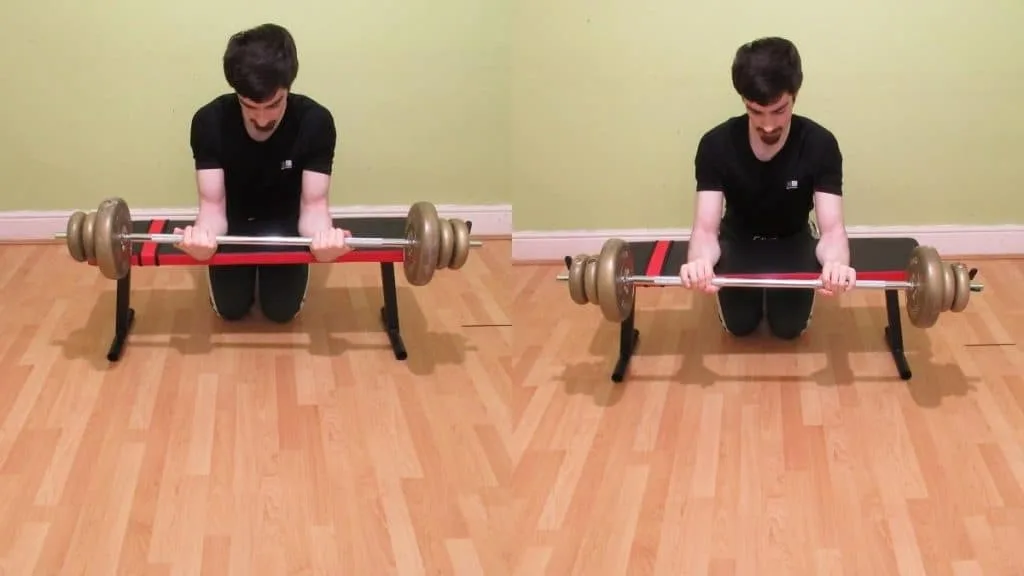
For those who can’t stand having toothpick forearms any longer, or if you want your forearms bigger than your biceps, this is the routine for you.
If you have small forearms but big biceps and triceps, then this is the routine for you as well. We buck the trend by kicking off the workout with forearm curls so that we hit our lower arms when they’re at their freshest.
Make sure to perform all your curls with a slightly extended wrist to relieve the flexors of some tension. This way, you can still hammer your biceps with near maximum weight, too.
Notice also how there are no forearm supersets. This is so we can give each part of the lower arm maximum attention.
1: Wrist curls: 4 x 10-12 reps
2: Reverse wrist curl (barbell): 4 x 20-30 reps
3: One arm dumbbell wrist curl: 2 x 20 reps
4: Plate pinch: 4 x 30 seconds per arm
5A: Reverse curls: 4 x 8-10 reps
5B: Skull crushers: 4 x 8-10 reps
6A: Incline curls: 4 x 12-15 reps (to failure)
6B: Overhead extensions: 4 x 12-15 reps (to failure)
Read More:
Conclusion: What’s the best bicep tricep and forearm workout
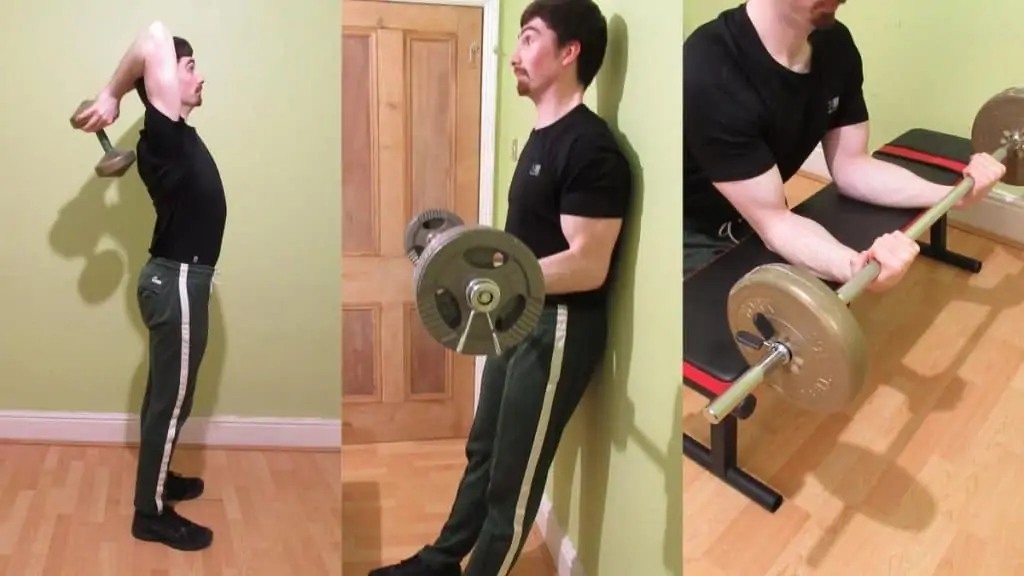
Obviously, the best bicep tricep forearm workout for muscle growth depends on your individual weak points. For example, as someone with good biceps but comparatively weaker triceps, I’d focus on bringing up my triceps long head because it’s the biggest single muscle in the upper arm.
If, however, you already have sleeve–busting upper arms, then there’s no harm in hammering your forearms first in the workout.
Alternatively, do a traditional arm session early in the day (bis and tris) and then come back in the evening and train your forearms. Either way, I hope that you found some stimulating inspiration for your next bicep tricep and forearm workout in my article!
References
- Grujičić, R. (2020, October 29). Deep extensors of the forearm. Kenhub. https://www.kenhub.com/en/library/anatomy/the-deep-extensors-of-the-forearm
- Berg, O. K., Nyberg, S. K., Windedal, T. M., & Wang, E. (2018). Maximal strength training-induced improvements in forearm work efficiency are associated with reduced blood flow. American Journal of Physiology-Heart and Circulatory Physiology, 314(4), H853–H862. https://doi.org/10.1152/ajpheart.00435.2017
- Kawczyński, A. (2019). Force and Electromyographic Responses of the Biceps Brachii after Eccentric Exercise in Athletes and non-Athletes. Journal of Human Kinetics, 68(1), 203–210. https://doi.org/10.2478/hukin-2019-0068

